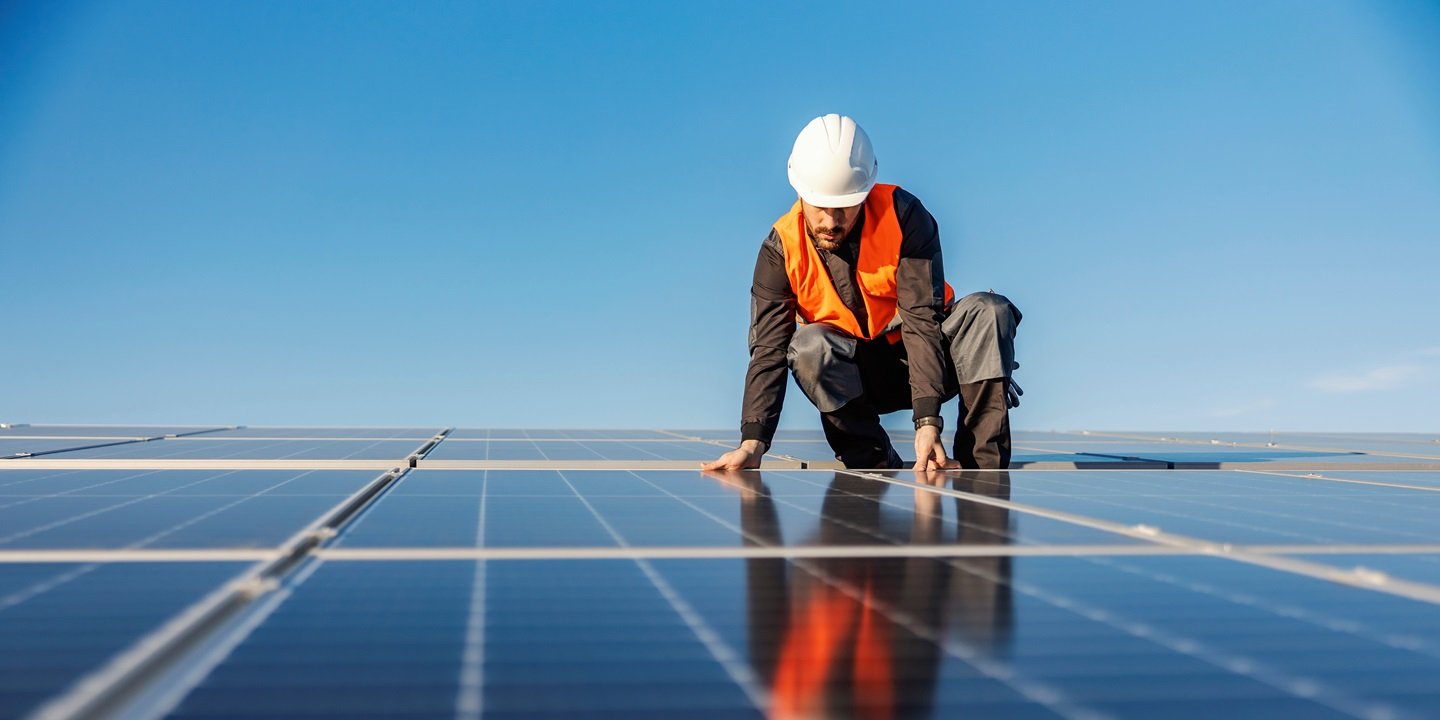Potential solar savings come with risks for auto dealerships
Climate and EnergyArticleMarch 17, 2025
Energy costs are a concern for any business, but they can hit auto dealerships especially hard. The machinery, tools and technology in the service shop and bright lights needed to best display inventory in large showrooms require a lot of energy. According to the National Automobile Dealers Association (NADA), energy is often a dealership’s third-highest overhead expense and the growth of on-lot EV charging stations is adding to those steep costs.1
It’s no wonder many dealerships have turned to solar power to help bring their energy bills down. In 2023, Group 1 Automotive completed installation of 10,000 solar panels across multiple dealerships and they had goals for solar installations at 25 more stores by the end of 2024.2 They are hardly alone in making this transition. Though the initial investment in solar power can be significant, the long-term savings can be a huge benefit. Beyond costs, many dealerships are looking to solar energy to help meet important sustainability goals.
The advantages are clear, but solar panels and other photovoltaic (PV) systems do have risks businesses need to address. Those risks increase when roof-mounted systems are used.
Zurich recommends installing PV systems on what are defined as “favorable” roofs, which include limited noncombustible roofs and some combustible roofs that have a thermal barrier. You can find more details on what meets a favorable standard for roofs in the Zurich Resilience Solutions white paper, “Photovoltaic (PV) systems on buildings: Pre-design, design, installation and operation,” available here. This document also covers PV system exposures and mitigation actions in much greater depth, and we recommend any dealerships considering installing these systems read it in full.
The white paper is organized into five key stages of a thorough approach for any company planning to use this technology:
- Pre-Design: This includes considering where the PV system will be mounted, structural and electrical system evaluations, natural hazard risks, assigning ownership for oversight tasks, selecting qualified contractors for design and installation, and more.
- Design: Considerations at this stage include electrical, building and fire codes; selection of system components; module placement; and protection systems (including fire detection, surge protection, fixed fire suppression/ extinguishing systems, and lightning protection).
- Installation: Beyond ensuring qualified installers are hired, this stage includes having QA (quality assurance) professionals on hand to monitor installation and confirm compliance with required laws and codes, as well as pre-design and design plans.
- Operation: Ongoing, regularly scheduled monitoring, inspection, testing and maintenance of the PV system are essential for both safety and avoiding business interruptions due to system failure. Operational logs should be kept as reference in the case of a problem. Your dealership should also have a change-management program to discuss potential changes, including expansion of solar systems or replacing older systems.
- Emergency Response: Even with the most diligent approach to all phases of implementing a PV system, a fire or other emergency may occur. Responding to these events with urgency and care can be the difference between your dealership opening its doors again or not. Ensure you have an Emergency Response Plan in place for fire detection, notification, fire service response, and PV system contractor response. Once the emergency has ended, recovery efforts should begin, including removing damaged components, roof repair, other needed repairs and system reinstatement.
System placement considerations
Where your PV systems are mounted is among the first exposures to consider. Ground-mount systems pose a lower risk than roof-mount systems as you can keep them further away from the buildings they power. However, property space considerations and potential obstructions may mandate the type of system used. One reason rooftop panels remain popular is that, depending on the building and landscape, they can sit higher than surrounding trees or other potential sun-blockers.
Take a diligent approach to managing rooftop risks
When news breaks about a major rooftop fire at a business, it understandably raises some fears, but compliant, properly installed rooftop PV systems should not pose a major fire hazard. (Compliance, incidentally, should not just encompass laws and regulations, which can vary in different cities and states. It should also mean being compliant with industry standards and recommendations from risk engineers and other safety professionals.) Improper installation techniques, poor system maintenance and lack of compliance are usually behind those headline-making incidents. Still, hazards will always exist. Following the guidance in our white paper and that of other safety specialists can help reduce the likelihood and severity of fires and other risks.
While ground-mount systems can sometimes be impractical, rooftop mounting does increase the exposure of PV systems to natural hazards like hail, lightning, high winds and earthquake damage. Thermal stresses from extremes of high and low temperatures, corrosion from humidity and precipitation, and damage from wildlife activity or tradesmen working on the roof can also increase chances of system failures and fire risks.
In addition to rainfall and flooding from storms, roof cover damage also presents a risk for water inundation from firefighting actions if a fire occurs. Water damage is often more costly than damage from the fire itself. Our white paper includes mitigation strategies to help reduce water damage.
As noted earlier, this article does not address every aspect of PV system risk mitigation, so please read the white paper and Department of Energy guide linked below. Reach out to your Zurich representative or contact Zurich Resilience Solutions if you need more information.
Additional resources
A Consumer’s Guide to Fire Safety with Solar Systems (U.S. Department of Energy)
This article originally appeared in the Fall/Winter 2024 issue of Dealer Principal magazine.
- “Solar for Auto Dealerships Drive Savings, Win Customers.” National Automobile Dealers Association (NADA).
- “Group 1 Automotive installs 10,000 solar panels on dealership rooftops.” CBT News. 1 December 2023.
